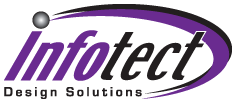Planning Your AI Policy
Getting started with artificial intelligence (AI) for a small or medium business can be an intimidating proposition. Already “AI” is a glamorized marketing term used in almost every industry. AI applications in areas such as manufacturing or customer service are easy to envision. How about AI at church or for a pest control company? Yes, those are real examples! In the past year AI has moved to the forefront of almost all technology conversations. Improvement in AI technology is being driven equally by businesses and consumers. The result is too much stimulus and very little direction on how to position yourself for the change in our midst.
I recommend you get started by thinking about policy. Policy may not be the most obvious choice, but it may help you grow towards developing your strategy. In their conference on AI, Gartner breaks artificial intelligence into 4 key areas to help you decide where to focus your efforts. External efforts will be either technologies that improve your client experience or revolutionize your client engagement. Internal efforts will be similar for finding applications to improve internal operations or reinvent your approach to your market. In short, evaluating artificial intelligence to either make you better at what you do or becoming a game-changer in your industry is the choice. However, even if you know which of the four areas you want to prioritize, having some policies in place for your current operation will help guide you.
You need a policy first because it is very likely your employees are using AI via large language models (LLM) already. They are using tools like ChatGPT, Bing Chat or Bard to collect, analyze and organize information. Your first priority is to get in front of that usage to lead it in the right direction for your organization.
Below are some must-have policy entries for your first draft. Feel free to copy/use these to help you write your AI policy. Building policy is a great way to assemble your management team and begin the AI conversation. When you are ready to take the next step, contact us!
Policy Elements:
Approved bots/sites/tools: All AI tools, bots, and sites must be approved by the IT department before use. This includes any third-party tools or services.
Communication to clients/peers: All communication with clients and peers must be transparent about the use of AI. If AI is used in any way, it must be disclosed to the client or peer.
Quality Control: All AI-generated content must be reviewed by a human before being released to the public or customers. This includes any content generated by chatbots, automated emails, or other AI tools.
Daily tasks: All employees must be trained on the proper use of AI tools and must follow best practices for AI usage. Any issues or concerns with AI tools must be reported to the IT department immediately.
Effective prompt writing: All prompts used in AI tools must be reviewed by a human before being used. Prompts must be clear, concise, and free of any bias or discriminatory language.
Confidential information/sharing/prompts: All confidential information must be protected at all times. This includes any data used in AI tools. Any sharing of confidential information must be approved by the IT department.
Allowed use scenarios (or not allowed): AI tools may be used for any task that is deemed appropriate by the IT department. Any use of AI tools that is not approved by the IT department is strictly prohibited.
Author: Steven Williams
Infotect Design Solutions is a leader in the managed IT services industry with 20 years of experience. We provide knowledge, products, services, and solutions to solve the technology challenges faced by small and midsize businesses. Our strong in-house expertise along with our established technology partnerships allow Infotect Design Solutions to deliver an array of IT solutions that address outsourcing, managed services, consulting, and cloud framework. For more topics like this subscribe to our newsletter!
